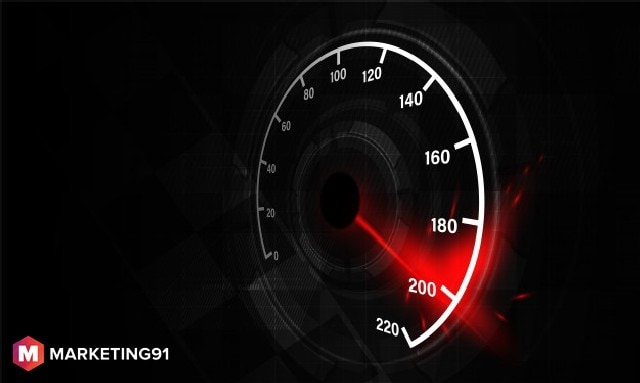In the past few years, big data has become an important term in the field of computer science. One gets the impression of a “huge amount of data” from the term “Big data.” It is not wrong to associate big data with massive amounts of data, but it leaves an incomplete picture of big data.
Big data deals with many challenges, along with dealing with an enormous amount of data. The challenges related to big data are
- Systematic extraction of information from huge data.
- Methods to analyze the vast data.
- Dealing with different data sets to get useful information.
The big data is a term used for referring to different types of technologies to extricate useful and meaningful information from a heap of massive data. Each set of extensive data has its unique challenges associated with it to capture and manage the data.
The traditional data, like relational data, was usually in structured or in semi-structured form. Therefore, it was easy to extract useful or desired information from it. However, big data is collected from different sources and in various sizes. As a result of that data can be in a structured, unstructured, and semi-structured format. Therefore, different types of technologies are used to harness the huge amount of data to obtain useful information from it.
The amount of big data is increasing every single because of every small activity taking place on the Internet. All the activities from making a 10 seconds video call with your mother to adding an item in your cart on an e-commerce website add to the amount of big data. A unique processing process is required to collect data produced by every device connected to the Internet.
Moreover, it also requires special algorithms to analyze and obtain useful information from non-uniform data. In the present times of such advanced technologies, companies are still struggling with dealing with huge amounts of data every day. Therefore, big data can be referred to as the data which cannot be managed and analyzed with traditional tools and techniques used for the analysis of structured and semi-structured data.
There is a phrase famous on the Internet, which is “Data is new fuel.” This phrase is quite correct in the present time. Because a large number of activities related to a business are performed on the Internet, and a large amount of structured and unstructured data is collected every day from these activities. This data can prove to be very beneficial for the businesses if they know how to obtain useful information from the raw data.
There are several examples of businesses that are making a million bucks by making the right use of big data. Let us take the case of the company, which has built its empire merely by making the proper use of massive data. According to the Seotribunal website, Google receives approximately 63,000 searches per second every day. Google considers over 200 factors before answering a query searched.
Pretty Impressive, Uhhh? Have you ever thought about how Google makes it possible to answers your every queries within seconds when you are unable to find your sock in 200sqmt room? Similarly, big data plays a vital role in several sectors, such as retail, media, technology, social media, financial industry, and travel. Therefore, it is right to say that big data is a new field that consists of challenges like sorting, managing, analysis, new tools and technology to deal with massive amounts of raw data.
In this article, I will talk about the different characteristics of big data or 5 V’s of big data that you need to know to establish an understanding of the big data.
Table of Contents
Characteristics of Big data
1. Volume
Volume is the most important characteristic of big data. It is the enormous size of data, which makes it big data. The meaning of the volume of data is the huge amount of data generated every single second platform. For example, According to a digital website, approximately 95 million photos are uploaded on Instagram, a social media platform every day. And another popular social media platform Facebook generates four new petabytes of data a day.
These organizations can’t manage and handle such a huge amount of data using traditional data management tools like relational database technology. Therefore, data is stored at different locations with the help of distribution systems and is brought together with the help of software.
The figures that I have mentioned above are increasing with every passing second, and engineers are required to come up with new ideas and methods to deal with such huge data.
However, until the present time, when I am writing this article, there has not been the invention of a technique that can provide a permanent solution to the problem. Soon, the amount of data is going to exceed with the inclusion of an increasing number of contributors to generate new data.
For example, in addition to human beings, because of the Internet of Things, there will be sensors all over the world, generating huge amounts of data every second. This is one of the most critical challenges waiting for digital entrepreneurs.
2. Velocity
The second V of big data is velocity. Velocity refers to the speed at which data is generated by different sources every second of a day. In addition to the generation of data, velocity also includes the collection and analysis of data. The speed in accessing the data plays an essential role in big data. Because many transactions are taking place in real-time.
For example, a person paying a bill using his credit card at a restaurant, a person playing online games, or a person shopping on an e-commerce website. To be able to provide real-time facilities to users, businesses are required to analyse the transaction and authorized it at light speed.
In addition to this, there is enormous data generated in the form of emails, messages, photos, and videos that are required to be collected, analyzed and stored for users. Big data technologies analyze the data as soon as it is generated without adding it to databases.
3. Variety
The third v of big data stands for variety. Variety means the different types of data generated. A variety of data is an important characteristic of big data. Big data deals with different, complex, and unstructured nature of data.
A few years ago, the data generated was in a structured form such as names, addresses, mobile numbers, etc. After the digitization, a significant part of the data generated is in an unstructured form. For example, photos, video clips, text messages, social media posts.
Old traditional database techniques are not sufficient to deal with such a variety of data. Therefore, big data techniques are designed to manage and analyze the type of data generated by different sources.
4. Value
Another important characteristic of big data is the value of the information extracted from the data. No matter how much data you collect but if you can’t use it to enhance your business or can’t use it for monetary benefits, then it is useless, and all your efforts in extracting the data is also meaningless. The right information extracted from the social media platform can also help you win the election. You know what I mean.
If you have a considerable amount of data, then it is crucial to determine for what purpose do you want to use the data and extract exactly that information from the data.
For example, have you noticed you see advertisements of different products that you have just viewed on an e-commerce website or you have added to your cart of the website? Based on this information, companies design ads uniquely curated for you that make you bring back to the site to make your transaction complete.
5. Veracity
Let us talk about the last characteristic of big data, which is veracity. Veracity means the trustworthiness of the data. If the data that you are using is not accurate, then you will not get the desired results as you want.
Your pile of data will be of no use if it is not accurate. For example, sometimes, companies buy data to run their marketing campaigns. If they want to run a campaign in India, then having the contact list of people in the USA will be useless.
Therefore, make sure that the data you are using is accurate and obtained from a reliable source.
If you want to read more on this topic, you can take a look at this article on the use of big data in the banking services and how it can improve efficiency and security while greatly enhancing the user experience.
Liked this post? Check out the complete series on Marketing




